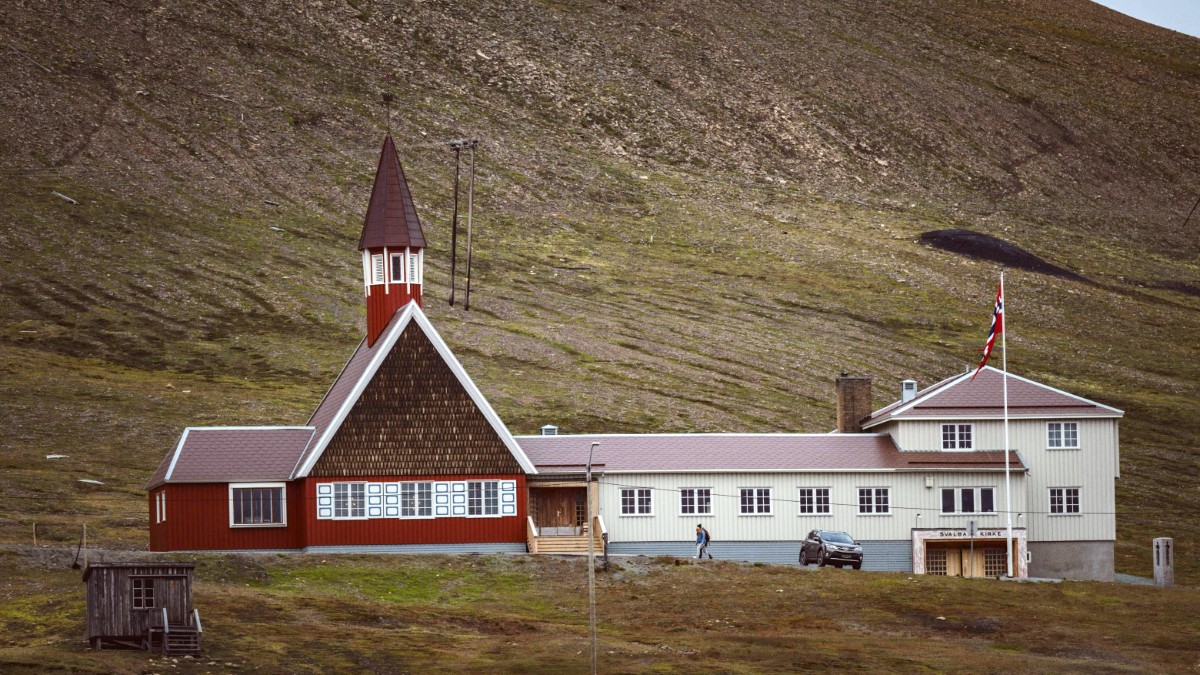
Svalbard, Norway
The town acts as a base for Arctic research, education, and tourism. It facilitates expeditions further into the wilderness. Despite its remote location, Longyearbyen holds modern amenities, comfortable lodging, and various dining choices. It presents adventure alongside comfort, allowing Arctic discovery without sacrificing safety or convenience.
The distinct seasons provide various experiences. Summer brings hiking, kayaking, and boat trips under endless daylight. Winter opens up snowmobiling, dog sledding, and ice cave tours under the glow of the aurora.
Each season carries its own appeal, attracting travelers seeking particular adventures. Wilderness exploration beyond town boundaries calls for strict safety rules.
Longyearbyen, the largest settlement and administrative center, belongs to Svalbard, an archipelago under Norwegian sovereignty. This island group lies in the Arctic Ocean. Longyearbyen stands on Spitsbergen, the archipelago's largest island, at 78°13′N latitude, just 1,300 kilometers (800 miles) from the North Pole.
The town stands on the southeastern shore of Adventfjorden, a branch of Isfjorden. Fjords are deep, narrow inlets carved by glaciers. The landscape reveals mountains and glaciers. Beyond the settlement, tundra unfolds, a treeless biome with permafrost—ground frozen for two or more years. Buildings often sit on stilts to counter permafrost thaw.
High latitude brings Midnight Sun (24-hour daylight) and Polar Night (continuous darkness).
Svalbard reindeer, Arctic foxes, and polar bears live here.
Air carries the scent of the sea, a constant reminder of the Arctic Ocean.
Frozen ground affects construction and limits road development.
Glaciers shape the land, flowing into fjords and shedding icebergs.
Pack layers for rapid temperature changes. Even summer days can turn cold quickly, especially on boat trips.
Average 5-8°C (41-46°F), offering a brief period of warmer weather, ideal for hiking and boat tours.
Average around -14°C (7°F) but can drop to -30°C (-22°F) or colder, excellent for Northern Lights viewing.
Beyond the town's limits, the true wilderness of Svalbard unfolds. Polar bears roam here, and strict safety rules protect both visitors and wildlife. Guides accompany most trips outside the settlement, ensuring responsible exploration. This guide presents the facts needed to prepare for this extraordinary destination.
Longyearbyen's origins date to the early 20th century, specifically 1906. American businessman John Munro Longyear founded the settlement. His Arctic Coal Company began coal mining, establishing the town as an American company town. Coal mining was the driving force behind the settlement's early growth and purpose.
In 1916, the Norwegian mining company Store Norske Spitsbergen Kulkompani acquired operations. This solidified Norway's presence in Svalbard. The town grew as a mining community under Norwegian management. Life for miners was rugged, shaped by harsh Arctic conditions and demanding work. Their efforts built the foundation of Longyearbyen today.
A secure seed bank, safeguarding global crop diversity since 2008.
From coal mining to research, education, and tourism, diversification marks the town's evolution.
Destroyed in 1943, the town was rebuilt, showing community strength.
World War II brought extreme hardship. In 1943, German forces destroyed the town, and residents evacuated. This event left the settlement in ruins. After the war, a determined effort rebuilt Longyearbyen. This rebuilding speaks to community strength and the continued significance of coal mining to Norway's Arctic interests.
One of the northernmost permanent settlements at 78°13′N 15°33′E.
Approximately 2,600 residents as of 2023, a diverse mix.
Norwegian Krone (NOK). Credit cards are widely accepted.
Polar bears roam, requiring strict safety protocols outside the immediate settlement area.
Midnight Sun (April-August) and Polar Night (Oct-Feb) shape daily life and activities.
Home to the "doomsday vault," preserving the world's plant diversity.